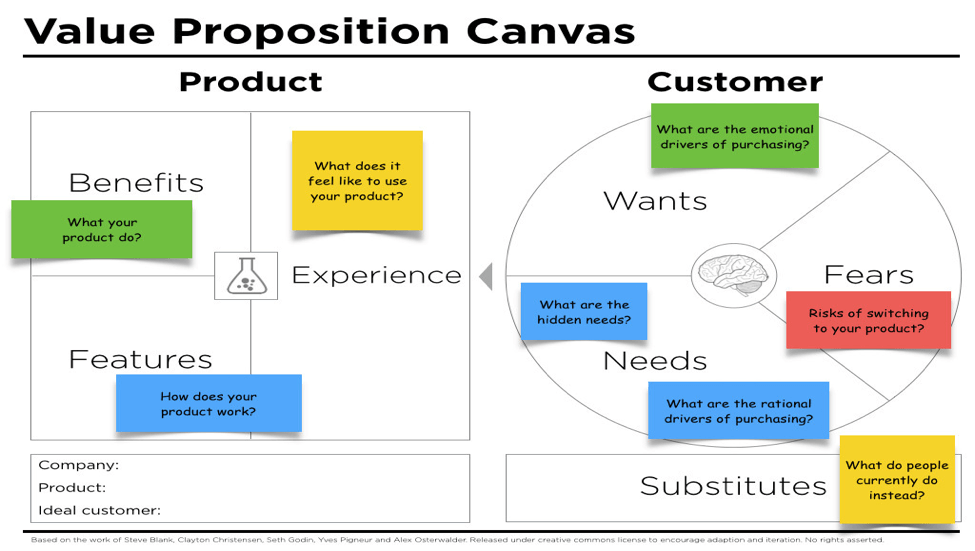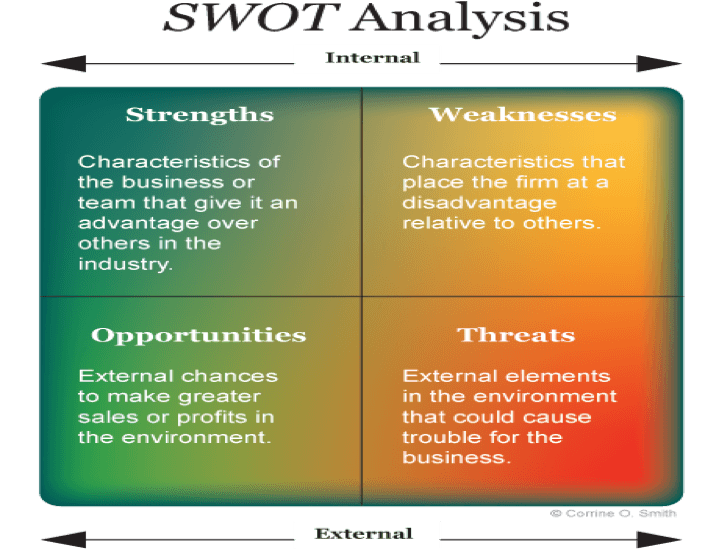Situational Analysis
Understanding your Online Marketplace
At Emarkable we are big believers in the use of well-established strategy frameworks and models as a means of crafting the ideal marketing strategy for each client. Every business is different and each has its own unique set of challenges and objectives peculiar to its own marketplace in which it operates. The type of strategy model we deploy will depend on a number of factors such as the length of time in existence and the clarity and evolution surrounding the company’s revenue model. One of most common strategy frameworks we use is called the SOSTAC model which was first developed by an Irish academic called PR Smith.
The term SOSTAC is an acronym that stands for the following
- S stands for Situation Analysis – which means where are we now?
- O stands for Objectives which means where do we want to go?
- S stands for Strategy which summarises how we are going to get there.
- T stands for Tactics which are the details of strategy.
- A is for Action or implementation – putting the plan to work.
- C is for Control which means measurement, monitoring, reviewing, updating and modifying.
Situational Analysis: Do your homework!
The starting point for any effective Marketing Strategy (Digital or otherwise) is a thorough analysis of how a business is structured and its interaction with the wider Marketing environment
The situational analysis is the foundation of the Digital marketing planning process. In most instances, it will make up over 50% of the time, effort content of the plan itself.
In summary situational analysis is a collection of methods that we use to assess what we call the company’s internal and external environment. In simple terms this means we look at everything internal which the company has control of ie its strengths and weaknesses. We also examine how its operates in the wider external environment By external we mean outside of the company and by definition, this means we have no real control over them These are the various opportunities and threats that its faces in the marketplace.
A proper detailed situational analysis will review issues like management, resources, culture, technologies, Unique Selling Proposition, customers, and essentially everything you have control of within your company to a greater or lesser extent.
We need to examine what’s happening in the wider business environment. What can have an impact on the future of the organisation both good and bad. This could include competitors, legislation, industry/global trends, and so on. When we align the two together we get recognition of where an organisation is at any given point in time.
In addition to the above elements, there are a number of other “variables “ which must be considered. These are essentially resources that must be factored into the self-assessment process. Most of us have heard the old saying “ A paper never refused ink”. In other words, we have to ensure that the organisation has the ability or a realistic chance of delivering on the Strategy objectives and targets.
This ability to deliver will always revolve around the following three issues.
- Money – Do we have the financial resources to support the plan?
- People – Have we the skills available to deliver on the tactics/strategies required?
- Time – Can we achieve our objectives within a realistic time frame?
SOSTAC
MODEL
We carry out the situational analysis it is important to be both clinical and keep things straight-forward in your assessment and research. In this regard, we always carry out a situational analysis under what we call the five C’s. If you do this thoroughly all the main elements will have been looked at.
The five C,s consist of the following:
- Company
- Customers
- Competition
- Climate
- Competitive advantage
1) Company
The company analysis involves an evaluation of the company’s objectives, strategy, and capabilities. These indicate to an organization the strength of the business model, whether there are areas for improvement, and how well an organization fits the external environment. These elements are usually internal to the company and in theory, are under company control.
Outlined below are typical questions we would consider when assessing company strengths or weaknesses.
If you feel some of these questions are irrelevant or not applicable to your particular business model then skip them and move on to the next question.
- Introduction to the company and short overview.
- How long has it been in operation, who are the founders and current management?
- If not a startup please describe how has the company evolved and what were the major milestones along the way.
- Describe the management structure and who is responsible for what?
- What about the skillset within the organisation? Is it ok or are new skills needed going forward?
- What is the main mission/objectives of the business? e.g My/Our business will be……..?
- Are their existing marketing/sales growth plans in existence?
- How are you currently using your Digital assets and how are they performing?
- How has the company been performing and how is it doing in relation to achieving existing marketing/sales plans?
- What about your current product or service offering?
- Do you intend to launch any new products or services in the future?
- Have you an option to diversify or explore new product business opportunities?
- Do you have a range of products?
- Are sales spread out across a number of product lines?
- Are you in a market with high growth potential or is it flatlining?
- Does the 80/20 rule apply? i.e 80% of sales/profit from 20% of products or 80% of sales from 20% of clients?
- Do some products contribute more to revenue than others?
2) Customers
In the online marketing world, we talk a lot about defining customer or buyer personas.
Definition:
“Buyer personas are fictional, generalized representations of your ideal customers. They help you understand your customers (and prospective customers) better, and make it easier for you to tailor content to the specific needs, behaviors, and concerns of different groups.
The strongest buyer personas are based on market research as well as on insights you gather from your actual customer base (through surveys, interviews, etc.). Depending on your business, you could have as few as one or two personas, or as many as 10 or 20. “
In this section we ask three major questions about your customers?
- Can you describe your ideal customer?
- Why do they buy (or not buy) from you?
- How do they buy ie. What is their buying process?
This is a really important part of the plan and it is essential that some serious thought is given to answering this set of questions.
It is only when we have a detailed insight into your customers can you start to plan your online content strategy. This will help to connect with your potential and existing customers in a manner that is relevant to them. This is about defining clearly your value proposition and making sure that it is relevant in the eyes of the customer. It is about looking for strategic insight to find those nuggets of differentiation between you and your competitors.
Where should you look for insight? These are some suggestions based on the Emarkable experience.
- Talk to your customers (face-to-face is best if possible)
- Check your analytics.
- Check existing sales records.80/20 rule
- Talk to your customers’ customer
- Interview your own experts
- Commission some research
- Do a web survey.
- Focus Group
- One-on-one discussion
- Spy on your competition
The Value Proposition Canvas is another Framework that we often use when looking for customer insight. This can be applied to any company.

The key takeaway here is as follows:
If you are serious about growing your business then you need to know your customers better than they know themselves.
3) Competition
“In the online world competition is only one click away”
Long-lasting relationships can help to defend against your competitors.
Can you think of ways that allow you to continually improve your relationship with key customers?
- List your main competitors.
- Who are they?
- How do they compete against you?
- How do you compete against them?
- Do you play to your strengths?
Another question.
What are you particularly good vis a vis your competition?
- Technology
- Product design/processes
- Service(friendly,faster,better motivation)
- High-level Knowledge, expertise and thought leadership
- Marketing (closer to customers, better image, better communications)
- Systems could be production, delivery, IT
- Financial
- Physical locations
- other?
- Make a note and think about your answers.
- Does your business have a distinctive competitive advantage on one of these?
4) Climate
In a marketing and general business sense when we talk about the climate we are referring to the general business climate in which your company is operating in. In most cases, it is totally out of your control but never the less it has to be factored into any strategy.
An example could be the overall economic climate or perhaps legislation that could affect you going forward. These factors are generally outside the direct control of the organisation but nevertheless, their potential impact has to be factored into any strategy development. An example of issues to be considered might include:
- Political and regulatory environment: An Analysis of how active the government regulates the market you are. Could their policies have a potential impact on the impact in the future? Is it an opportunity or a threat?
- Economic Environment: An Analysis of trends regarding macroeconomics, such as spending power and inflation. Exchange rate fluctuations would also fall into this category. The volatility of the Brexit debate and the effect on the value of sterling is a classic case in point. How do you factor these types of events into your strategy planning
- Social/cultural environment: Interpreting the trends of society, which includes the study of demographics, education, culture, etc…eg Rise of Millennials
- Technological analysis: An analysis of technology helps improve on old routines and suggests new methods for being cost-efficient. To stay competitive and gain an advantage over competitors, businesses must sufficiently understand technological advances.
In summary, can you think of any factors outside your control that could affect your marketing plans good or bad going forward.
5) Finding your source of Competitive advantage through Swot Analysis

Finally, before we start to set our objectives to build our strategy, and devise we first need to take stock of all the factors we considered during our situational analysis carried out above.
We have considered many internal aspects of our business in relation to how it is structured at present and the manner in which it operates. These are all within the control of management and are either inherent “strength” or “weakness”.
We also then considered factors that are outside or external to our control such as activities of competitors or the general business/economic climate. When we think about these they can generally be considered either an Opportunity or a Threat for the business in trying to achieve business objectives.
We now need to consider all of these factors taken together ie good, bad, outside, and inside to allow us to devise and formulate a strategy going forward that must have a realistic chance of success.
Can you list three core strengths that you have identified?
- What are you really good at? How can you play to your strengths in winning customers?
- Where are your weaknesses that need to be addressed?
- Can you identify what are the main market opportunities for your business to exploit?
- Can you list the primary external threats that have to be considered when thinking about implementing your plan?
After having completed your SWOT analysis and considering all of the above. After having completed your SWOT analysis you should be able to identify where your competitive advantage lies vis a vis your competitors.
Can you think of how your competitive advantage can be translated into your Online Value Proposition? Your value proposition is a promise of value to be delivered and a belief from the customer that value will be experienced!
What is the sweet spot in your company attributes that separates you from your competitors in a positive and meaningful way in the eyes of your competitors
When you capture your company’s expertise and package it up to help your prospects do their jobs,or have a better experience you earn people’s attention instead of simply assuming you’ll get it
The best online content and value proposition come from a very specific clearly defined area of expertise
This is the spot where you have the most authority. Its where no one can claim better knowledge or expertise than you do. Write out your Value Proposition in a sentence
Our Value proposition is as follows: …………………………………………………………………………………………………………………………………………………………………………………………………………………………………
It is only when the situational analysis is completed should you progress to stating what are your main objectives from a marketing, sales, and revenue perspective.
We will talk in more detail about the process of objective setting in our next blog.

